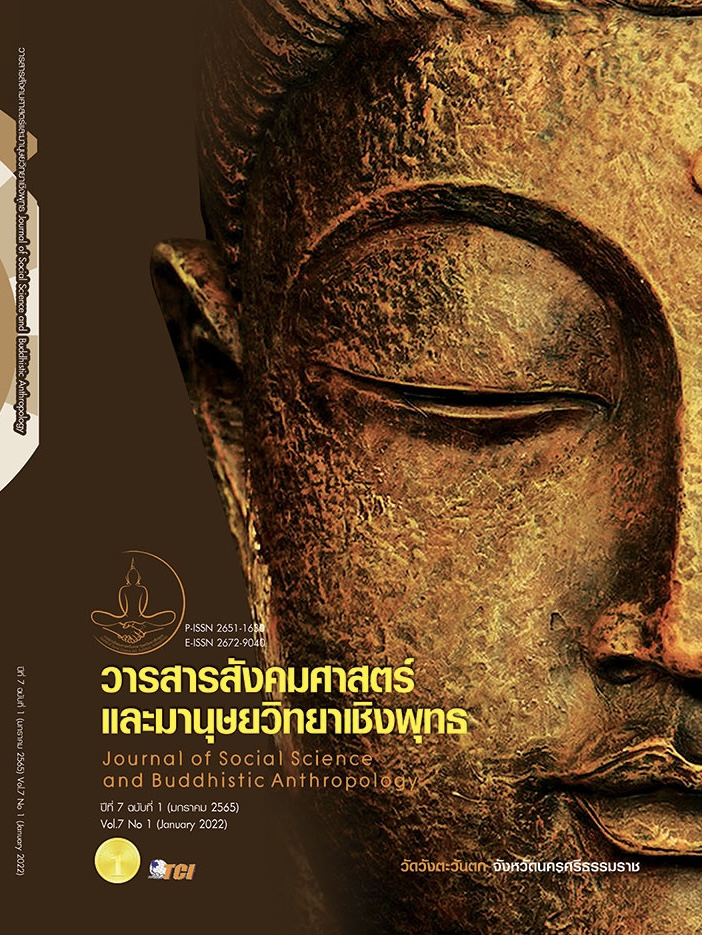POSITIVE PSYCHOLOGY: STRATEGIES FOR DEVELOPING LEARNERS IN THE 21st CENTURY
Keywords:
Positive Psychology, Strategies for Developing Learners, Learners in the 21st Century, CPAEM ModelAbstract
The concept of positive psychology began and in fact has been around for decades. This concept was known in the academic domain when Seligman and Csikszentmihalyi proposed this concept by making publications in American Psychologist Journal in 2000. Although the concept of positive psychology originated in 2000, has been around over a decade and also has been initially used in Thailand since 2007, there is a lack of support in terms of extensive implementation in education management in Thailand. Therefore, "positive psychology" is an individual's mental state expressing good feelings, fondness, commitment, a worry-free state, a stress-free state, safety. In fact, these feelings bring about mental and physical strengths. They can be summarized by being categorized into 3 groups with main concepts as follows: 1) concept of positive characters or strengths of individuals 2) concept of Positive Psychological Capital (PsyCap) and 3) concept of people with Positive Orientation (POS). Therefore, the author has proposed the conceptual framework of using positive psychology in order to develop skills of learners in the 21st century in details of 5 steps so-called CPAEM Model as follows: Step 1 refers to the analysis of class conditions and purposes of developing learners (Contextual Analysis : C); Step 2 refers to preparing learners to be ready to development (Preparation : P); Step 3 refers to doing the activity of learning and teaching (Action : A); Step 4 refers to making assessment and giving feedback (Evaluation and Feedback) and Step 5 refers to supervising, performance monitoring and development (Monitoring).
References
บุษบา หะริณพลสิทธิ์ เเละคณะ. (2561). การเสริมสร้างต้นทุนทางจิตวิทยาเชิงบวกของนักเรียนอาชีวศึกษาโดยการให้คำปรึกษากลุ่มแนวทฤษฎี เหตุผล อารมณ์ พฤติกรรม. วารสารวิชาการศึกษา คณะศึกษาศาสตร์ มหาวิทยาลัยศรีนครินทรวิโรฒ, 12(1), 56-73.
พิมพันธ์ เดชะคุปต์. (2558). การจัดการเรียนรู้ในศตวรรษที่ 21. กรุงเทพมหานคร: โรงพิมพ์แห่งจุฬาลงกรณ์มหาวิทยาลัย.
สายรุ้ง ธิตา เเละคณะ. (2559). การพัฒนารูปแบบการเรียนการสอนตามแนวคิดจิตวิทยาเชิงบวก เพื่อส่งเสริมการเรียนรู้อย่างมีความสุข สำหรับนักศึกษาคณะครุศาสตร์ มหาวิทยาลัยราชภัฎ. วารสารมหาวิทยาลัยราชภัฎลำปาง, 5(2), 147-163.
สายสมร เฉลยกิตติ. (2553). การพัฒนาทุนทางจิตวิทยาเชิงบวกของพยาบาลวิชาชีพโดยการให้คําปรึกษากลุ่มแบบบูรณาการ. ใน วิทยานิพนธ์ระดับดุษฏีบัณฑิต สาขาวิชาจิตวิทยาการให้คำปรึกษา. มหาวิทยาลัยศรีนครินทรวิโรฒ.
Caprara, G. V. et al. (2009). Human optimal functioning: the genetics of positive orientation towards self, life, and the future. Behavior genetics, 39(3), 277-284.
Ciarrochi, J. et al. (2016). Contextual Positive Psychology : Policy Recommendations for Implementing Positive Psychology into Schools. Front Psychol, 7(2), 15-61.
Csikszentmihalyi, M. & Csikszentmihalyi, I. S. (2006). A life worth living: Contributions to positive psychology. London: Oxford University Press.
David, S. A. et al. (2012). The Oxford handbook of happiness. London: Oxford University Press.
Fineburg, A. C. & Monk, A. (2015). Different approaches to teaching positive psychology, Positive Psychology in Practice : Promoting Human Flourishing in Work, Health, Education, and Everyday Life. New Jersey: John Wiley & Sons.
Luthans, F. et al. (2007). Psychological capital: Developing the human competitive edge. London: Oxford University Press.
Mathew, W. & Margaret, L. K. (2018). Positive education : Learning and teaching for wellbeing and academic mastery. International Journal of Wellbeing, 8(1), 1-17.
Mathew, W. (2016). Why won’t it Stick? Positive Psychology and Positive Education. Psychology of Well-Being, 6(2), 48-95.
Pawelski, J. O. (2020). The elements model: toward a new generation of positive psychology interventions. The Journal of Positive Psychology, 15(5), 675-679.
Peterson, C. & Seligman, M. E. P. (2004). Character strengths and virtues: A handbook and classification American Psychological Association. London: Oxford University Press.
Reznitskaya, A. & Wilkinson, I. A. (2015). Positively transforming classroom practice through dialogic teaching. Positive Psychology in Practice: Promoting Human Flourishing in Work Health. Education, and Everyday Life, 9(3), 279-296.
Schreiner, L. (2010). The “Thriving Quotient”: A new vision for student success. About Campus, 15(7), 2-10.
Seligman, M. E. (2012). Positive psychology in practice. USA: John Wiley & Sons.
Downloads
Published
How to Cite
Issue
Section
License
Copyright (c) 2022 Journal of Social Science and Buddhistic Anthropology

This work is licensed under a Creative Commons Attribution-NonCommercial-NoDerivatives 4.0 International License.








